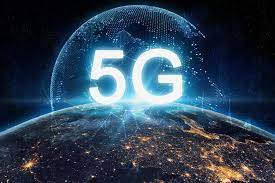How Astonishing Technology Trends Would be in 2023?

It’s hard to believe that we are already nearing the end of 2022 and will soon be entering a new year. As we say goodbye to 2022, we also need to start preparing for what lies ahead in 2023 and beyond.
One way to do this is by keeping up with the latest technology trends. This can help you stay ahead of the curve and be prepared for whatever changes may come your way. So, what technology trends can we expect in 2023? Here are a few predictions from experts in the field.
What are some of the most popular technology trends?
Some popular technology trends include:
1. The Internet of Things (IoT)
2. Artificial Intelligence (AI)
3. Virtual Reality (VR)
4. Augmented Reality (AR)
5. Blockchain
Let’s look at some of the technology trends that we’re going to see in 2023.
1. More sophisticated AI

When it comes to artificial intelligence (AI), businesses are looking for solutions that can help them automate more complex tasks. This includes tasks that require human-like reasoning, such as natural language processing and image recognition.
In recent years, we’ve seen AI become more sophisticated, with the development of deep learning algorithms that can mimic the workings of the human brain. This has led to significant advancements in areas such as facial recognition and machine translation.
As AI continues to evolve, we can expect to see even more impressive applications in the future. Businesses will be able to use AI to automate increasingly complex tasks, freeing up employees to focus on higher-level work.
2. Increased cyber security

Increased cyber security is one of the most important technology trends in 2018. This is because, as our lives become more and more dependent on technology, we are also becoming more vulnerable to cyber-attacks.
There have been a number of high-profile cyber attacks in recent years, such as the WannaCry ransomware attack that hit Britain’s National Health Service, and the Equifax data breach that exposed the personal information of 143 million people.
These attacks have made it clear that businesses and individuals need to do more to protect themselves from cybersecurity threats.
One way to do this is to make sure that you have strong cybersecurity measures in place. This includes things like using strong passwords, encrypting your data, and using trusted security software.
Another way to improve your cybersecurity is to stay up-to-date on the latest security threats and how to protect yourself against them. You can do this by reading articles like this one, and by following websites and news sources that focus on cybersecurity.
3. Virtual Reality becomes more realistic

Virtual reality (VR) technology has been around for decades, but it has only recently become more realistic and immersive. With advances in computer graphics and 3D printing, VR is becoming more realistic and affordable for consumers.
Some of the most popular VR experiences are video games, which can be played on consoles such as the PlayStation 4 or Xbox One, or on a PC. There are also many VR apps available for smartphones, which allow users to experience virtual reality without expensive hardware.
There are a number of different VR devices on the market, including the Oculus Rift, HTC Vive, and Sony PlayStation VR. Each device has its own strengths and weaknesses, so it’s important to choose one that best suits your needs.
VR can be used for entertainment, education, training, and even therapy. For example, VR can be used to simulate dangerous situations so that people can learn how to react without being in actual danger. Additionally, VR can be used to help people with anxiety disorders by exposing them to feared situations in a controlled environment.
4. 5G technology becomes widespread

G technology, or gigabit connectivity, is becoming increasingly widespread as a result of the continued rollout of high-speed broadband and fiber networks. This technology offers speeds of up to 1 Gbps (gigabit per second), which is significantly faster than the average broadband connection.
Read also: Amazon is adding Tiktok-style feed in its App
This increased speed and bandwidth enable a number of new and innovative applications, including high-definition video conferencing, cloud computing, and ultra-fast internet browsing. In addition, G technology can help to improve the quality of online gaming experiences and enable new virtual reality applications.
The emergence of 5G technology will also lead to a further increase in the use of G technology, as this next-generation network will offer even higher speeds and capacity. This will open up even more opportunities for businesses and consumers alike to benefit from the power of gigabit connectivity.
5. More environmentally friendly technology

2023 will evidence more people-friendly technologies. Here’s what should it would look like:
1. More environmentally friendly technology
With the ever-increasing awareness of the need to protect our environment, many technological advances have been made in recent years to help make our world a cleaner and more sustainable place. From solar energy and electric vehicles to more efficient buildings and recycling initiatives, there are many ways that we can all help to make a difference.
2. Increased connectivity
The way we live and work is changing rapidly, with more and more people now working remotely or from home. This has led to a need for increased connectivity, both in terms of internet access and mobile coverage. We are now seeing 5G being rolled out in many countries, offering faster speeds and greater capacity than ever before.
3. Virtual reality and augmented reality
Virtual reality (VR) and augmented reality (AR) are two technologies that are becoming increasingly popular, particularly in the gaming and entertainment industries. VR allows users to immerse themselves in a completely artificial environment, while AR provides a view of the real world that is enhanced or supplemented by computer-generated images.
4. Artificial intelligence
Artificial intelligence (AI) is another area that is experiencing rapid growth, with businesses and individuals alike looking to harness its power. AI can be used for tasks such as data analysis, pattern recognition, and predictions, making it an invaluable tool for businesses looking to stay ahead of the competition.
6. New developments in medical technology
The healthcare industry is under constant pressure to improve patient outcomes while reducing costs. Technology can help meet these goals by providing clinicians with new tools and data to make better decisions, improving communication and coordination among care team members, and automating routine tasks.
One area of healthcare that has seen significant advances in recent years is diagnostic imaging. Newer imaging modalities such as PET/CT and MRI are providing higher-quality images that can help doctors detect disease earlier and plan more effective treatments. Telemedicine is also becoming increasingly prevalent, allowing patients to consult with specialists from the comfort of their own homes.
In the area of treatment, new technologies such as minimally-invasive surgery and robotic assistants are making procedures less invasive and more precise. These techniques can often be performed on an outpatient basis, which reduces costs and speeds up recovery times. Additionally, personalized medicine is beginning to take hold, with treatments tailored to each individual patient’s specific genetic makeup.
Technology will continue to play a vital role in transforming healthcare for the better. As new innovations are developed, they will bring greater efficiency and effectiveness to the delivery of care.
Conclusion
It’s impossible to say for certain what the technology landscape will look like in 2023, but we can make some educated guesses. We expect that quantum computing and artificial intelligence will continue to develop rapidly and that 5G technology will become more widespread. Virtual reality and augmented reality may also become more common, as well as new technologies that we can’t even imagine today. Whatever the future holds, it’s sure to be fascinating — and we can’t wait to see what comes next.




